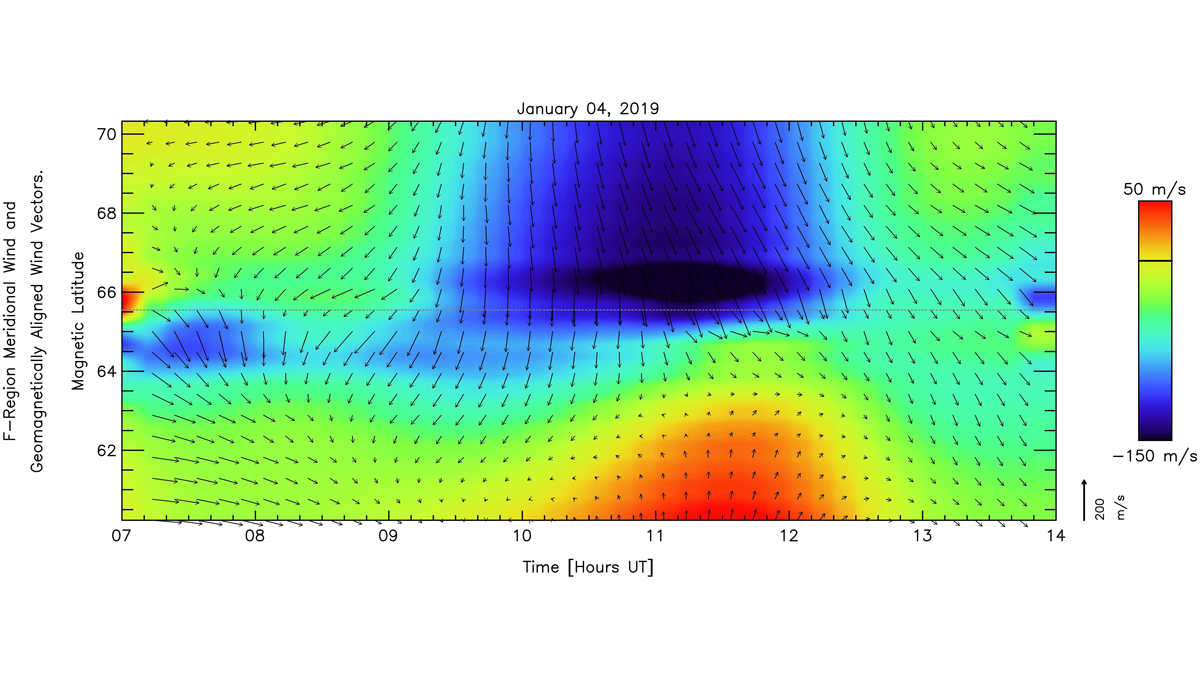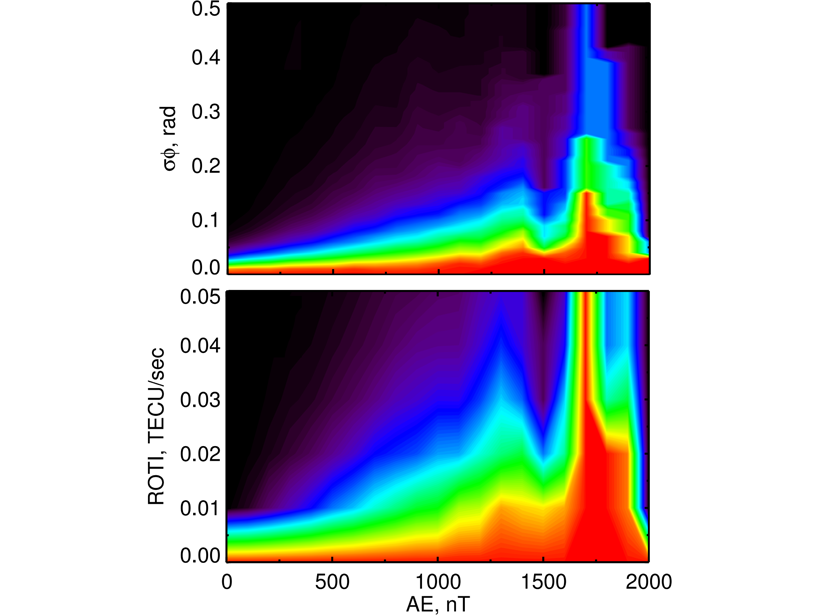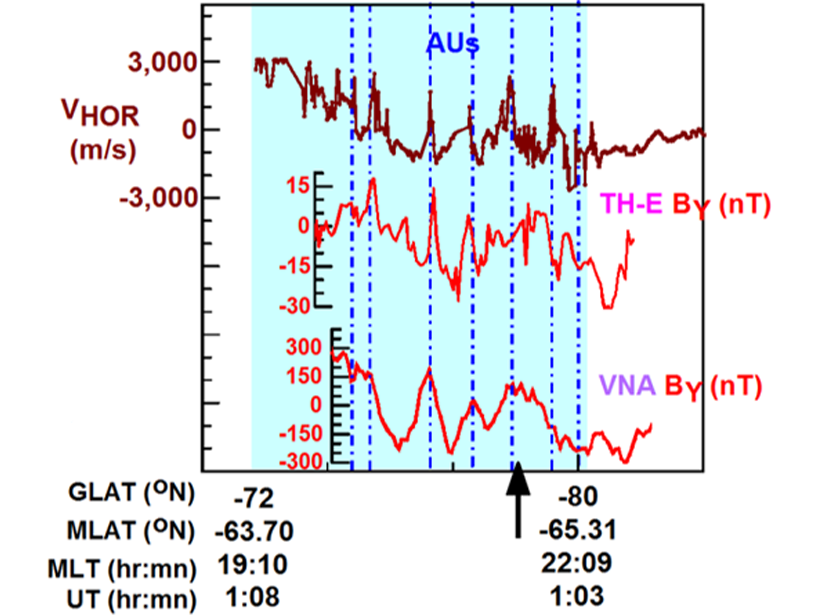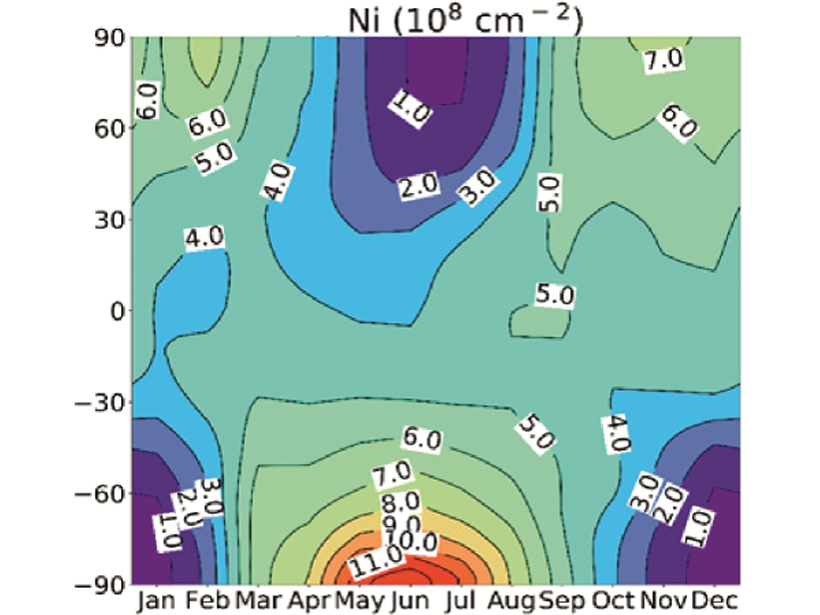Observations of cross-polar cap neutral winds near 240 km altitude stalling over short distances in the midnight sector near Poker Flat, Alaska, challenge the standard view of high-latitude dynamics.
Michael P. Hickey
Editor, JGR: Space Physics
The Auroral E-region is a Source for Ionospheric Scintillation
Observations reveal a connection between auroral particle precipitation and scintillation, indicating that the ionospheric E-region is a key source region for phase scintillation at auroral latitudes.
Satellite Data Reveal Magnetospause K-H Waves Impact Auroras
Analysis of multiple satellite data has revealed a striking connection between K-H waves on the magnetopause, surface waves in the hot zone near the plasmapause, and auroral undulations.
Stratospheric Weather Impacts Light Species at Great Heights
Sudden stratospheric warmings in the high latitude wintertime can drive changes in light species (H, He and O) all the way though the thermosphere, likely influencing ion densities in the exosphere.
First Model of Meteoric Nickel in the Upper Atmosphere
A layer of nickel of cosmic origin, which exists between 80 and 110 km high in Earth’s atmosphere, has been modeled for the first time, including dynamics and complex neutral and ion chemistry.




![Two plots showing percent changes in TIME-GCM zonally averaged [O+] and [H+] as a function of latitude and altitude in the Northern Hemisphere between the “disturbed” and “pre-disturbance” time periods in 2012–2013](https://eos.org/wp-content/uploads/2020/12/2020JA028331-Figure-12-top-row-with-legend-sized-for-Eos.png)
